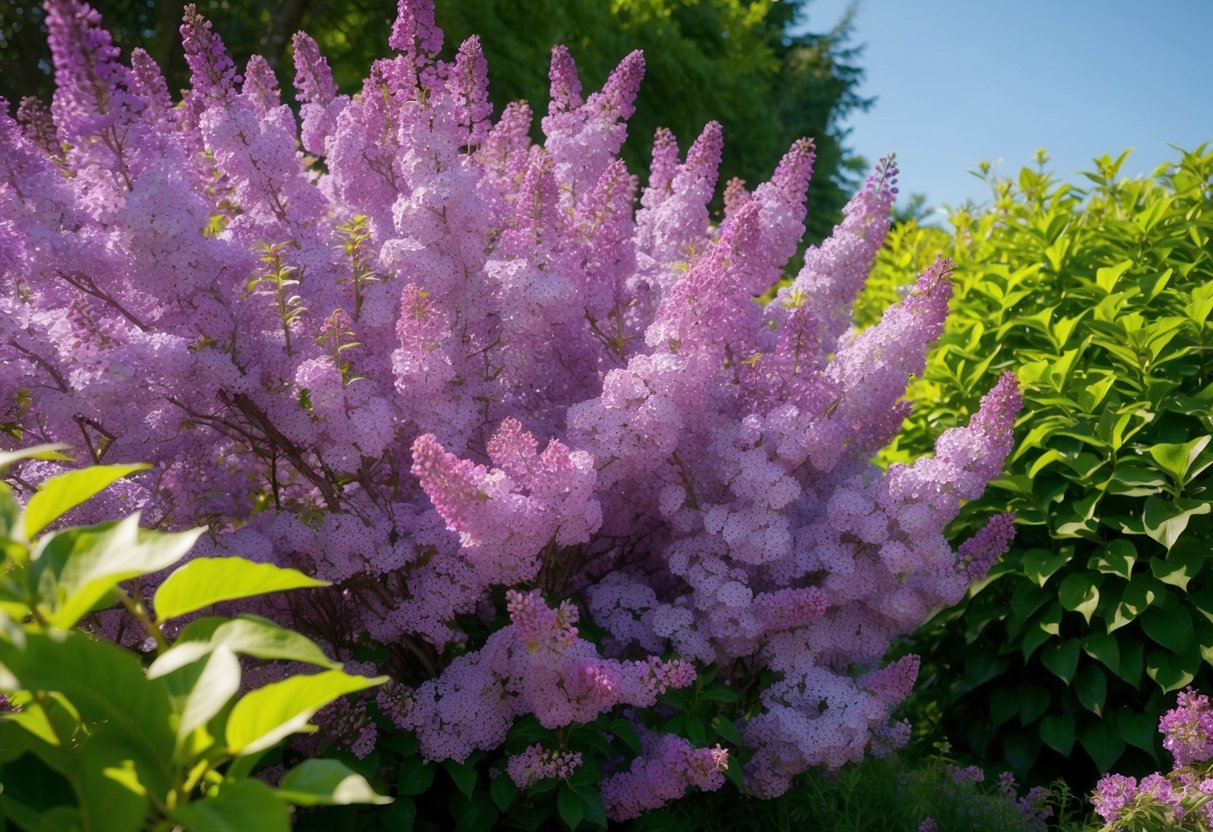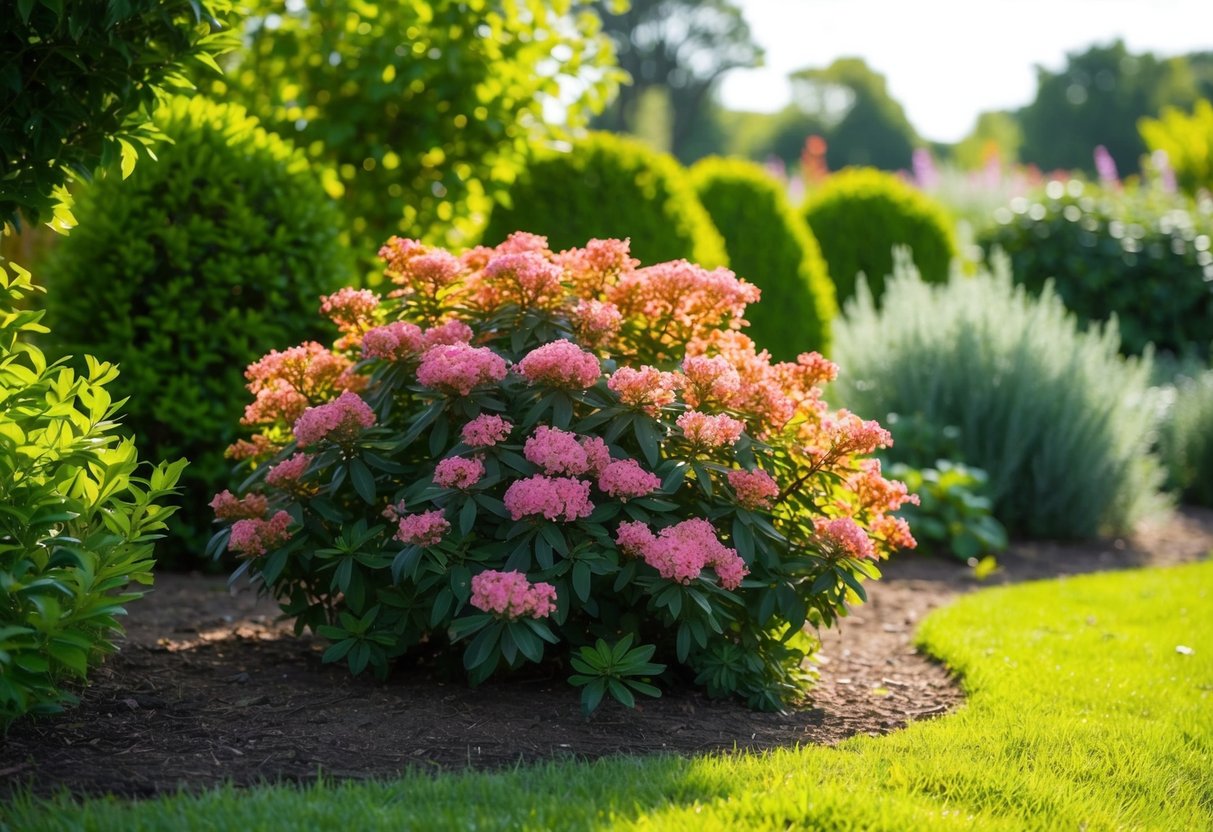What is the Easiest Flowering Shrub to Grow? A Gardener’s Guide
Looking to brighten up your garden without too much hassle? You’re in luck! When it comes to choosing flowering shrubs that are easy to grow, Bluebeard Caryopteris is a fantastic option. This charming shrub showcases lovely spikes of blue blooms in late summer, and it’s known for being low-maintenance. Its manageable height of around 4 feet makes it perfect for anyone’s gardening efforts.

Besides Bluebeard, there are other excellent choices if you’re seeking low-maintenance flowering shrubs. Many gardeners adore Hydrangeas, known for their vibrant colors and ease of growth. These shrubs thrive in various climates and can add a stunning visual impact to your landscaping efforts.
Whether you’re an experienced gardener or just starting out, picking the right flowering shrub can transform your space effortlessly. With the right choices, like the Bluebeard, your garden can be a welcoming haven for pollinators while giving you a lush and colorful landscape to enjoy.
Choosing the Right Shrub for Your Garden

When picking a flowering shrub, you’ll need to consider factors like sun exposure, soil type, and the plant’s growth habits. These elements will ensure that your shrub thrives and adds beauty to your garden.
Considering Sun Exposure and Soil Type
Start by observing how much sunlight your garden gets each day. Some shrubs prefer full sun, meaning they need at least six hours of direct sunlight. Others thrive in part shade, needing less direct sun.
Knowing your garden’s soil type is also key. Some shrubs, like azaleas, require acidic soil, while others may do better in more neutral conditions. Consider using a soil test to find out the soil pH and adjust if necessary.
Make sure the soil is well-draining to prevent root rot. If the soil retains too much water, you might need to add materials like sand or compost to improve drainage. Careful consideration of sun and soil can lead your shrub to flourish beautifully.
Understanding Shrub Hardiness and Growth Habits
Hardiness refers to a shrub’s ability to withstand local weather conditions. Check the USDA hardiness zone for your area and match it with the shrub’s hardiness rating. This ensures that your plant can survive year-round.
Growth habits indicate how large and wide the shrub can get. For instance, the Weigela can grow 5 to 6 feet tall, while dwarf varieties remain smaller.
Think about the mature size of the shrub to avoid overcrowding in your garden. Planning for these factors helps you create a garden that stays vibrant and healthy all year long.
Popular Low-Maintenance Shrubs

When you’re looking for shrubs that require little fuss, consider these popular choices. You’ll discover beautiful blooms, vibrant colors, and enticing fragrances that are easy to enjoy without demanding much effort.
Hydrangeas: A Versatile Favorite
Hydrangeas are a top pick for many gardeners because of their striking blooms and adaptability. They come in various colors, including blue, pink, and white, and some varieties change color depending on the soil pH. Hydrangeas are happy in both sun and shade but appreciate some protection from the harsh afternoon sun.
These shrubs can reach up to 15 feet tall, and they thrive in well-drained soil. Pruning hydrangeas isn’t complicated; just remove dead stems after they bloom. They are a great choice for adding a lush look to your garden without needing constant attention.
Rhododendrons and Azaleas: Acid-Loving Beauties
Rhododendrons and azaleas bring vibrant colors and lively textures to any yard. These shrubs prefer acidic soil and usually bloom in spring, showcasing vivid shades of pink, purple, red, and white. They prefer a spot with morning sun and afternoon shade.
Generally, they are low-maintenance if planted in the right conditions with well-drained, acidic soil. Prune them right after flowering to encourage more blooms the following year. These shrubs create a mesmerizing landscape with minimal maintenance.
Fragrant and Colorful Choices
Looking for a shrub with delightful scents and colors? Consider lilacs and viburnums. Lilacs offer charming, fragrant flowers that appear in early spring, while viburnums produce both fragrant blossoms and vibrant fall berries.
Forsythia is another favorite for its bright yellow blooms in early spring, perfect for adding early color to gardens. These shrubs thrive in various soil types and require little pruning, making them easy choices for anyone who wants a perfumed and vibrant garden. Their appeal lies not only in their beauty but also in how little effort is needed to sustain them.
Attracting Wildlife with Flowering Shrubs

Invite more wildlife into your garden with the right choice of flowering shrubs. By selecting specific plants, you can attract butterflies, hummingbirds, and other pollinators, creating a lively and vibrant outdoor space.
Shrubs to Attract Butterflies and Hummingbirds
Planting shrubs like the butterfly bush and lantana can draw butterflies and hummingbirds to your garden. The butterfly bush is known for its beautiful, fragrant blossoms and attracts a wide range of pollinators. This shrub blooms in vibrant colors, including purple and pink.
Lantana is another excellent option. With its clusters of small, colorful flowers, it’s perfect for attracting both butterflies and hummingbirds. It thrives in sunny areas and requires minimal care, making it a favorite for many gardeners.
Honeysuckle can be a great addition as well. Its sweet fragrance and tubular flowers make it irresistible to hummingbirds. Plant these shrubs in areas with plenty of sunlight for the best results in drawing these delightful creatures to your garden.
Creating a Natural Habitat for Pollinators
To create a welcoming environment for pollinators, consider layering your plants. Use tall shrubs as the backdrop and smaller flowering plants in front. This arrangement provides the essential shelter and food sources that pollinators need.
Choose a variety of plants that bloom at different times of the year. This strategy ensures a continuous supply of nectar and pollen for butterflies, hummingbirds, and other pollinators. For instance, pairing early-blooming honeysuckle with late-blooming lilacs can keep your garden lively throughout the seasons.
Remember to avoid using harsh pesticides, as they can harm the very pollinators you wish to attract. Instead, opt for natural pest control methods to maintain a healthy, wildlife-friendly garden.
Care and Maintenance Tips

Growing flowering shrubs can be easy, especially if you know how to care for them properly. Key aspects include pruning for healthy growth and ensuring they receive adequate water and nutrients for beautiful blooms.
Pruning Techniques for Healthy Growth
Pruning helps maintain the shape of your shrubs and encourages new growth. Use sharp, clean tools to avoid damage and disease. Focus on removing dead or diseased branches and any that cross or rub together.
Many shrubs benefit from pruning in late winter or early spring before new growth starts. Watch for flowering shrubs that bloom on old wood, like lilacs, which should be pruned right after flowering to avoid cutting off next year’s buds.
Light, regular pruning throughout the growing season can also help your shrubs stay compact and healthy. For low-maintenance shrubs, you can trim them less often but still keep an eye out for any branches that need attention.
Watering and Fertilizing for Lush Blooms
Watering is essential for flowering shrubs, especially young or newly planted ones. Once established, many shrubs become more drought-tolerant, but it’s still important to water deeply every couple of weeks during dry spells.
Mulching around the base helps retain moisture and suppress weeds. Fertilize in early spring with a balanced, slow-release fertilizer to support growth and blooms.
Be cautious not to over-fertilize, as this can lead to lush foliage with fewer flowers. If your shrub seems healthy but isn’t flowering, it might be getting too much shade or not enough nutrients. Adjusting these can lead to more vibrant blooms.
Designing Your Garden for Aesthetic Appeal

Making your garden look beautiful can be fun and rewarding. By choosing the right plants, you can create a space that’s not only attractive but also functional. Consider how evergreen shrubs and mass plantings can enhance not just the beauty but the feel of your garden.
Creating a Privacy Screen with Evergreens
Evergreens are great for creating a privacy screen that can shield your yard from prying eyes. Popular options include leyland cypress and arborvitae, which can grow into dense hedges. They’re hardy, stay green year-round, and require minimal maintenance once established.
These shrubs also help reduce noise and can protect your garden from strong winds. Planting them in a row along the boundary of your property can provide a natural barrier while adding to the aesthetics. Hedges made with evergreens can also be trimmed into various shapes, allowing you to personalize the look to fit your style.
Mass Plantings for Dramatic Impact
Mass plantings can create a stunning visual impact in your garden. By grouping the same type of flowering shrub, like hydrangeas or roses, you create bursts of color that can boost your garden’s curb appeal. This technique involves planting several of the same species together in one area.
Choose shrubs that bloom at the same time for continuous color. Consider the space needed for each plant to ensure they have room to grow properly. This approach also makes maintenance easier since plants with similar needs are grouped together. Mass plantings are ideal for creating focal points in your garden or framing pathways.







